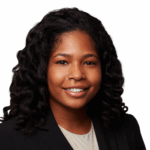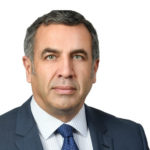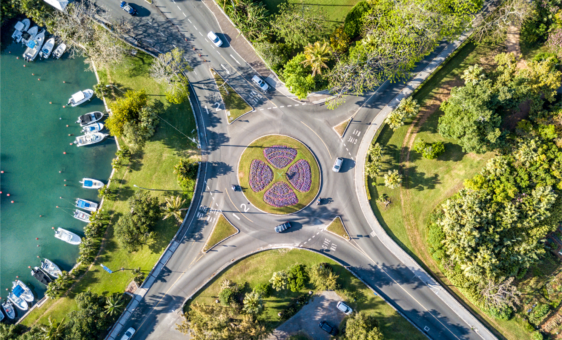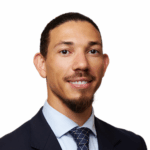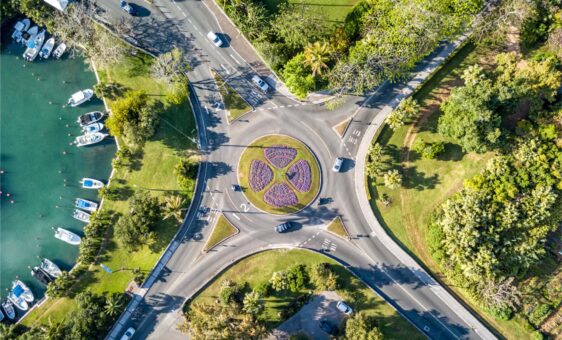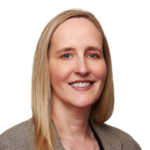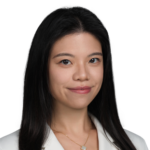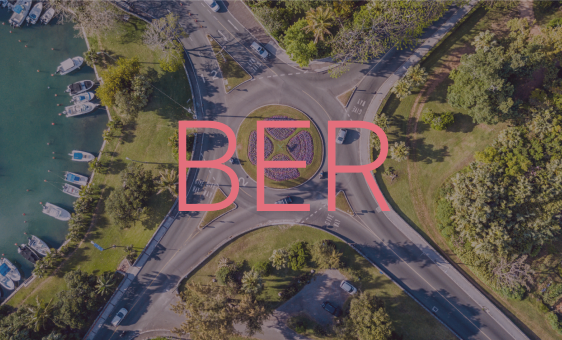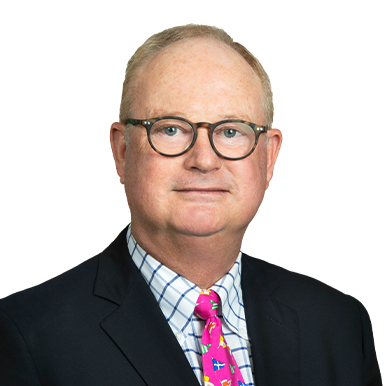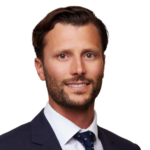First Published in Bermuda Finance Magazine, December 2020
Bermuda remains the world leader in the ILS space. But as the sector grows and evolves, it must stay vigilant and continue to innovate to retain that position. Eight executives prominent in this space met virtually to debate these issues in a virtual roundtable.
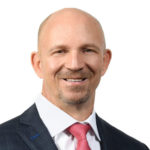
HOW WOULD YOU CHARACTERISE THE HEALTH OF BERMUDA’S ILS SECTOR?
Craig Redcliffe: Bermuda has been a major player in insurance-linked securities (ILS) over the years and we see continued growth in the sector. It’s important to EY and it’s important for the jurisdiction.
Greg Wojciechowski: The Bermuda Stock Exchange (BSX) has worked very closely with the ILS market for well over a decade and have very much enjoyed cooperation with the participants, the cedants and everybody who supports the space.
We have had great success promoting Bermuda as a centre of excellence for the creation, support and listing of ILS securities.
At the BSX, we have a unique vantage point as we provide Bermuda’s exchange platform supporting ILS securities and their ability to list on a regulated market to meet investor requirements for transparency and information disclosure. In short, we focused on this segment of the industry very aggressively as we saw a unique opportunity to help position and solidify Bermuda’s position globally in respect of the ILS space.
This year, as the uncertainty of the pandemic began to set in, we were unsure how things would shake out. We weren’t travelling, we weren’t able to meet with our colleagues, we were in lockdown and unable to get a personal read on the market at that point.
But 2020 has been one of our best years. We haven’t seen a slowdown in terms of the number of deals seeking the listing services of the BSX. On the cat bond side, there has been about $42 billion of new issuance, which is at record levels.
In total, at Q3 2020, we have over 500 ILS securities listed, which is over 90 percent of global market cap outstanding. But the most surprising, reassuring and positive thing is that even where deals have been registered outside Bermuda, those deals have sought listing on the BSX.
It is encouraging that Bermuda and the BSX have created that critical mass and value proposition which provide international investors a one-stop shop where deals are originated, supported and listed on an internationally recognised exchange platform.
All things considered, all aspects of the Bermuda ILS platform have held up well through this challenging period and market conditions.
Andrew Hughes: To offer a different angle, performance-wise, it’s been a pretty torrid few years for the entire market, and that has tested investor views on the asset class. Some poorly timed their entry, coming straight into three to four years of losses, and COVID-19 has presented many unexpected new challenges that left some investors scratching their heads.
They might have pandemic exposure elsewhere in their portfolio. That is obviously a market-wide issue, but from an investor’s perspective it’s a mixed bag. Some are very excited about the opportunity; others are licking their wounds and paring back, acting quite cyclically on this.
At Hiscox, it has been pretty stable. We don’t operate in the cat bond market, but we focus on private collateralised, bilateral ILS, which is the majority of the market. Consequently, we are seeing different investor sentiments.
Most of the brokers are saying that we are slightly down on ILS capacity this year, but we have some investors taking capital off, while others are looking to lean into this opportunity in a big way.
There are some who want to commit a lot more cash, and there are some big sovereign wealth funds out there allocating into the space.
Overall, I think it’s positive, but people really want a handle on COVID-19. They want to understand how it’s impacting portfolios. That’s going to be a big theme for the end of the year and will probably drive a lot of market pricing. They want to understand exactly how hard this market going to get.
They have been waiting for a material hardening in the market, and it’s going to happen. Things are looking very positive, but there is still some investor scepticism as to whether or not that hard market is going to be there.
Tom Libassi: From a performance standpoint, it has been a very good year. We repositioned ourselves a couple of years ago away from sectors of the market that we thought would be impacted by pandemic risk. Investors are clearly fatigued by trapped capital. I know I’m like a broken record on that subject, but unless the asset class solves that particular problem, it’s going to be a short-lived class.
We think we have found multiple ways of solving it. We did a securitisation of the issue earlier this year, which was very successful and was placed with all non-ILS investors.
I agree that after we shut down at the beginning of the year, people thought there would be no flows into it, after fatigue about trapped capital and one of the biggest distress cycles we’ve seen in over a decade.
Fortunately, the distress cycle didn’t happen, the market continued to rally and the only asset class that hasn’t participated has been the ILS asset class. So now we’re noticing significant changes to investor interest. We are going to see growth this year.
Erik Manning: Peak Capital was acquired by Peak Re in April 2020, although the business itself has been around since 2017. Since April 2020 we have more resources and an additional focus with Asia. In a Bermuda context, there continues to be a lot of potential.
Peak Re is constituted on the basis of there being an enormous opportunity to capitalise on exponential growth in the insurance sector across Asia. Asia will continue to be a generator of growth and Bermuda has the opportunity to capitalise on this. We are an ILS manager, but we are also involved in other areas on the ground in Bermuda and that’s something I hope to be exploring with the market at large.
We haven’t suffered the impairments or indeed the issue of trapped capital that others have experienced. However, trapped capital has been a big issue for ILS in general over the last few years and this creates a pretty big hurdle for the industry to overcome if we want to re-establish the trust of investors.
Consequently, we have witnessed investors trending towards products that are either more liquid or less exposed to cat.
Traditional managed ILS products in 2020 are a challenge in relative-value terms. There are many things that people can invest in right now and ILS, which arguably has underperformed in recent years, is simply not one of those asset classes that is seeing massive inflows, leading into 1/1.
However, in 2020 traditional reinsurance entities may be the net beneficiaries of this dislocation. Certainly, Peak Re, our parent company, is expecting global rates to be much improved relative to prior years. So, there is an upside and a downside to all of this.
Rachel Bardon: It has been a very busy year for Hudson Structured Capital Management (HSCM). On the capital inflow side, we definitely saw a slow-down during the spring. That was partly driven by investors, their due diligence was slowed during the pandemic. But it picked up again in the summer and has been strong during the fall.
There was a bit of a delay, but we actually saw a huge increase in capital inflows across the traditional market over the summer. So that seemed to be the focus for investors: on the traditional side as opposed to the ILS side.
On the outflow side, we have had massive opportunities to deploy capital, partly because we are a less traditional ILS fund. Property cat is a part of our book, with the rest in casualty, life and health, other property and financial risks.
We have also seen a lot of opportunities with the Florida domestic insurers, given the distressed situation over there. Distress is potentially an opportunity for us to invest.
On the run-off side, there will be a chance to grow and we have seen a lot of opportunities to invest in that space.
Insurtech continues to have plenty of opportunities, especially on the distribution side.
There has been a lot of talk about rate increases. I don’t know if those increases are actually sufficient; it is a hardening market, but I don’t know if it’s hard enough.
Tom Mills: From our perspective it’s been an interesting year, especially as everyone’s sought to understand the implications of COVID-19. The uncertainty this created earlier in the year seemed to drive a lot of activity in the industry loss warranty (ILW) market both from traditional and ILS markets as companies looked to shore up additional protection using index-based products as a cleaner, simpler product.
As we approach 1/1, it will be interesting to see whether this trend continues in anticipation of there being less retro ultimate net loss capacity available.
Brad Adderley: It has been an interesting year and a busy year. To begin with, there was less cat bond issuance but that has picked up and there will be a lot more towards year end. It’s going to be a very strong year end on the cat bond space.
We are still seeing quite a lot of enquiries on sidecars, also interest in the collateralised market and cat bond lites. Some traditional startups are also coming in.
There has been a lot of talk about investors leaving the market, but we’re also seeing new funds being formed and they are large. Traditionally, a new fund would be $100 million, but we’re seeing funds coming to the market north of that. That makes them a more significant player from day one.
I wouldn’t be surprised if by the end of the year we’re seeing record numbers of cat bonds and players in the new fund formation space.
WHAT ARE YOU SEEING IN TERMS OF MARKET CONDITIONS AND RATES?
Redcliffe: I would say that with the rate improvement, investors are seeing this as an opportunity that should provide some growth for the ILS sector too. It really depends on the perception of investors towards the rate improvement and whether it is sufficient to compensate them for their views of the risk.
Given some of the losses over the last few years and the perception of the losses being of an unmodelled nature, investors are asking more questions. The due diligence process has taken a little longer. Investors want to ensure that they understand the models, what’s included and what’s not included.
The other question investors are asking is how long this environment is going to last. Is this a short-term change or is it more of a cyclical change that will last a few years? Investors are asking questions, but we are certainly seeing an increase on the demand side.
Libassi: There is a lot of investor distrust out there. To be blunt, most of us heard the same story in 2018 and rates never improved as everyone told them they would. That is on top of the trapped capital issue. The property sector is also difficult for investors. They do feel more comfortable with the rate increases, but it’s not just rate increases, it’s the tightening of terms and conditions which people forget to tell investors about. That is actually much more important than the rate increases.
We don’t think people are going to have more money to spend on reinsurance next year than they spent on buying reinsurance this year. The only way that is going to happen is through higher attachment levels, better terms and conditions, etc. Rates are likely to increase, but they may not go up to the 20 percent that a lot of people are signalling. The average may increase to 20 percent but the top line may not.
The other big challenge is social inflation and the impact on casualty. For example, funds have been raised to buy assignment of benefit claims and fund lawsuits against insurance companies in Florida. Unfortunately, we have probably not heard the end of challenges that surfaced back in 2017. That makes states like Florida more difficult and it’s one of the reasons you’re seeing a lot more investors interested in non-property asset classes.
Of course, that will be a challenge for Bermuda because it has been the centre of the property market for years, whether on the reinsurance side, traditional or alternative providers such as the ILS market. The situation will clearly change at some point, but that combined with climate change (another big focus among investors) means there is a bit of a wait-and-see attitude at the moment.
From our standpoint, we think this market is probably going to be one of the most attractive since the early 2000s. But terms and conditions are changing dramatically and that is more positive for the reinsurance industry than the rate changes.
Manning: In a nutshell, innovation is going to be very important for our industry. Yes, marginal rate improvements are coming, but bigger changes are also likely in the near future.
I think new asset classes will come to the market that are not cat-related—new regional exposures and new ways of bringing investments to the market that improve the overall liquidity profile of investors.
There will be another wave of innovation and the BSX is very well positioned to be a vehicle for more liquid opportunities.
Wojciechowski: Since we made the decision to enter the ILS space and asset class, it’s been our intention to provide exchange infrastructure that offers the support that is expected for any listed asset class such as price discovery, trading, clearing and settlement.
We knew early on that we wanted to work alongside the market and that we had a unique value proposition given our status as an internationally recognised stock exchange, but were very aware that migration to a regulated trading platform could not be forced and would happen in an organic fashion. We are also committed to providing our support and experience to the ongoing evolution of secondary market aspects of the asset class.
As a result, we will continue to position BSX and work with the ILS market so when conditions are right, we can offer regulated exchange infrastructure to the space—we have the same thought process in respect of the digital asset environment as well.
Regulated markets are very important for instilling investor confidence as they provide third party independent support to the secondary market price discovery mechanism as well as transaction settlement assurances.
Manning: Finding a more liquid way of repackaging ILS exposure for the benefit of investors is going to be one avenue through which we can effect growth in the sector. The other area is the expansion of what we do in this business. At the moment, I feel as though we are getting towards the end of phase 1 of the market’s development.
Some of the bigger players in ILS are talking about setting up rated vehicles through which to front their own transactions and thus help to eliminate some of the negative consequences, side-pocketing, capital trapping and so on.
As a business model, I find that very interesting. It’s one more avenue through which we may see a second wave of ILS: an expansion of the business and an expansion of investors’ interest.
Libassi: I agree that the creation of rated balance sheets is the future. The ability to expand beyond property, which is only 30 percent of our portfolio, is the future. I also think that creating vehicles (whether in the US, Europe, or Asia) and allowing investors multiple ways to access risk, is the future.
Our investors can now access primary insurance risk, the US and speciality risks. That is what they want and that is the opportunity for Bermuda—provided we have a fast, thoughtful regulatory environment, which is what the BMA has done to date.
But it is going to require changes in the way we view what a reinsurance company is. It’s clear what the next phase of ILS looks like, but it is going to require a favourable regulatory environment. And I think that is one of the big advantages Bermuda has over other jurisdictions.
Brad Adderley: I totally agree with what you’re saying— rated reinsurance is the way to go but it’s no longer a collateralised product. That’s how to achieve flexibility with not as much trapped capital.
Bardon: I agree. ILS doesn’t have to be collateralised reinsurance, it’s just one way for investors to participate.
Libassi: Our philosophy is that we’d rather own it. We own managing general agents, and insurtech companies. We don’t talk about it, but we already own it. The vast majority of our profitability comes out of insurance now.
Bardon: Yes, that’s how we have been able to stabilise our results over the last few years. Other ILS funds that focused purely on property cat are seeking rate increases and telling investors to inject more capital. But what if they have another larger-than-average cat year?
Because we are diversified, not just outside cat but also outside collateralised reinsurance, we have much more stable returns—and that has been attractive to investors.
Hughes: I agree, everything that’s old is new again. Is it ILS? Who knows? Is it reinsurance 2.0? When managers form own-rated fronts, they don’t have the legacy, so they are able to do it more efficiently and cheaply— and that’s part of the problem. The traditional reinsurance market has legacy issues.
For some investors, it is simply a property cat play—that’s the non-correlation they’re after. Meanwhile, others are interested in moving into different risk areas. Of course, once you get into those other risk areas, you get into issues around valuation and trapped capital. That is a big thing.
It comes back to transparency. Investors say ‘you’ve got to tell us’.
We have some investors who are actually quite comfortable with that. They’re long-term allocators and they get it. Others, however, are definitely looking for a solution. The securitisation created a lot of interest, but if you did have a thriving secondary market that is really going to change things a lot.
Libassi: What 2017 and 2018 showed was that the concept of property having a short tail is no longer true. When we started in marine in 2014 and 2015, people said the tail was too long. But our tail is shorter than the property sector’s. We would love to figure out a way to get into the casualty market, but I agree that the tail is too long.
But the property tail is five years—it’s not 12 months, which is what everyone thought. As soon as you accept the fact that the average life is 24 months-plus, that opens up a much bigger universe. And as soon as you begin to convince investors and explain what return they can expect after 24 months that changes everyone’s view of the asset class.
Bardon: It’s true, some investors are longer-term and that allows you to start doing things in auto, cyber and other shorter-tail casualty lines. In terms of a secondary market, if you were able to sell off, securitise or commute back the tail to the cedant, that could help expansion into the medium/longer tail lines of business.
WHAT WILL BE NEXT FOR THE ILS MARKETS IN TERMS OF INNOVATION?
Brad Adderley: Rated balance sheets will come. The second issue is secondary trading. I think some of the new electronic platforms being built will hopefully make it easier and quicker to trade in the secondary market. But we want that innovation to happen in Bermuda, and we hope the BMA will regulate it properly.
Cat bonds came to Bermuda 10 years ago, then sidecars and then the collateralised market. Now insurtech and electronic platforms have arrived, and all these things have arrived in Bermuda—not other offshore jurisdictions.
We should continue to help the BMA to ensure that future products are developed here, because Bermuda has the opportunity to really grow.
Redcliffe: A lot of the innovation we’re seeing is on the traditional reinsurance side. But on the ILS side, the biggest thing we need to get a handle on is how to manage that tail. There is no easy answer—perhaps looking at secondary trading or engaging with run-off carriers to see whether there is interest in having the run-off carrier reinsure the tail.
Because that is their core competence they certainly could have a role to play—the question, of course, is price. We’ve talked about the rated carrier and I think that also handles this issue quite nicely.
Mills: Transparency is a key message we’re receiving from the market, particularly when it comes to losses and how these are being reserved and reported. This issue has been highlighted by the fact that property hasn’t proved to be as short tail as expected following some of the adverse developments on recent losses over the past few years.
Hughes: I would love to say that we’ve tripled our assets under management on the basis of a flight to quality, but we’ve had a mixed bag with some investors taking money off the table and others putting more in.
Maybe that’s part of the flight to quality. Different managers have different issues around performance valuations.
Bardon: On the deployment side, I think there’s a flight to quality. Investors and funds are more focused on well-behaving and trustworthy counterparties and cedants. There has been some poor behaviour, and the coverage and contract terms need to be clearer in some cases.
Some cedants and counterparties have not done appropriate or timely reserving or valuations. From my perspective, the flight to quality is about finding the right partners based on trust, as opposed to targeting certain returns.
Manning: The term ‘flight to quality’ is often used to refer to the fact that some players have a long record in the industry and therefore have built a brand. I believe that in a time of general scepticism around manager performance, people may well migrate to better established brands.
Bardon: We are also quite focused when it comes to transparency in the modelling. We have extensive documentation on the modelling before it gets approved or goes onto our books.
Our monthly valuations have detailed reviews in which we look at what is on risk, off risk, trapped or trying to return the funds. That level of communication with investors has been helpful.
Manning: I feel that Peak Capital is part of the new wave of ILS managers. The amount of transparency/disclosure that we give is very granular.
We provide much more information in a more timely manner than has traditionally been typical in the industry.
For example, we have an external validation process which is something that five years ago our industry tended to shy away from.
When investors want to look into our book of business, we want them to understand how we do what we do, why we do what we do. Historically, I don’t think that this level of disclosure was necessary or desirable.
If we’re talking about flight to quality, transparency of disclosure and transparency of information are what constitute quality for a lot of investors.
Redcliffe: There is no doubt the level of due diligence that’s being undertaken is much more extensive—from the length of time and the number of questions that are being asked to the level of detail required.
Climate change is a big issue. How do models incorporate that and does the pricing really reflect that increased risk?
As a result, due diligence is taking longer. I would agree that pension funds generally want an established track record. It’s harder to get an initial allocation, for example, if you are a brand-new fund. But once you do get an allocation those are the types of investors you want for the long term.
They understand the risk, they understand how it interacts with the overall portfolio—especially in terms of non-correlated returns with the rest of their portfolio.
In the early years, many ILS investors were short-term, hedge funds, etc, and although they have a place in the market, it’s harder to build a long-term portfolio with short-term capital.
Brad Adderley: Regarding flight to quality, if you look at existing carriers in the marketplace over the last five months, a lot of them have been quite successful in raising capital. We’ve seen some large capital raisings—and that’s interesting.
By contrast, most of the startups this year have been brand new commercial reinsurers with brand-new management teams, and they are raising between $500 million and $900 million. That’s actually quite low compared with previous startups.
So it looks as if investors are more willing to give capital to an established player in the traditional space than a startup.
Libassi: The amount of diligence being done now is equivalent to the amount of diligence that investors have done in other private market asset classes for decades. The fact that they just woke up to it in the ILS space is a positive.
The big change is that investors are now putting 1 percent into a retro fund, not really caring if they lose their money—they see it as a long-term allocation to non-correlated diversifying strategies. It is growing up as an asset class, so we have to be prepared to have the same level of transparency that investors have always had in other asset classes. That is a big shift.
The failure of people to do startups, both on the fund side as well as in the new company side, is also a reflection of the market growing up. This is not about exposure; it is about how you are different and how you provide value.
That’s a real opportunity for all of us to potentially have the biggest market and compete with Lloyd’s, which is ripe for picking right now.
You can charge the same amount and make 10 to 15 points more. And there is no reason why that market cannot move to Bermuda. It’s just a matter of solving some of the tail-risk issues.
Lloyd’s is the same as the ILS market, it’s just been around for more than 300 years. It’s the oldest hedge fund in the world, although no-one ever thinks of it that way.
Those are massive opportunities for the ILS space in Bermuda, and investors are thinking about the world differently. We are all concerned about how we are being treated by counterparties.
Not everybody has treated funds the same way. That applies to classic reinsurance companies as well: not everyone has treated people the same way, and I think there is a flight to quality on that side.
Manning: We are at that critical juncture, where many investors are beginning to reassess what they do in the ILS space and how they do it. I see an opportunity for all of us to innovate and grow the ILS industry in Bermuda.
We’ve talked about the operational side of things, but we also need a sea-change in how we manage these businesses and how we think about our responsibilities to our investors—relative to the counterparties and relative to our trades.
A lot of different components of the business need to be innovated in order to make the overall proposition more interesting. Obviously, because of our parent company, Peak Capital is very much focused on Asia and its ILS opportunities.
When you start getting into these different types of risks and different types of operational structures, you’re now talking about funds that are structurally different from what they used to be. The old 12-month, closed cat-only structure is gradually disappearing.
When I look across the performance of peers in our industry, the reason that cat bonds have performed well it because it is the only piece of our industry that is in fact ‘debt-like’. We all sell debt instruments in one form or another.
You can look at it any way you like, but investors who invest in ILS managers are typically debt investors, historically speaking.
Perhaps the time has come for the ILS industry to start thinking about how it bifurcates. A lot of risk is going to be much less subject to trapped capital, much less subject to losses, much more applicable to a debt such as execution format.
The rest of the industry maybe needs to start inventing new ways of approaching the problem.
Wojciechowski: I wonder if this flight to quality discussion doesn’t refer to a confluence of different things which are making investors more aware. When the cat bonds asset class began to get traction post the global financial crisis in Bermuda, were investors opportunistic? Did they see this non-correlated asset as something that was yield-driven and unique?
They did, and that was the fuel that kicked off the renewed interest in these structures. As an exchange infrastructure provider, I look at ILS as an asset class moving through its life cycle: it is starting to mature and act in a similar way to other more unique asset classes.
Investors are asking a lot of very important questions about the mechanics of the asset class—and that’s good for the industry. As they get more comfortable, understanding results in longevity and fuels interest in the asset class.
The other thing that is fascinating and exciting to me as an exchange operator and infrastructure provider, is the discussion calling attention to the importance of transparency. When the BSX began its support of the asset class, there was a lot of hesitancy around the structure and certain aspects of the deals coming to market, but that’s not the case any more.
Structures seem more commoditised and issues confronting the asset class are more openly and collaboratively discussed among industry participants. That’s a really positive development.
The next step is a migration to regulated markets, which will give more confidence to the marketplace and make the secondary market more enticing. That could drive more business from a secondary market perspective as liquidity underscores a pathway to exit—if needed.
WHAT ARE YOUR FINAL THOUGHTS ON OPPORTUNITIES FOR THE JURISDICTION?
Wojciechowski: This is not a sea-change, but simply a discussion concerning the environmental, social and corporate governance (ESG) attributes of ILS that has become a very topical discussion across all asset classes that we see at the exchange level.
ILS as an asset class, in particular, is an interesting development because it captures the focus of a whole new investor demographic into an asset class that we know, by its very nature, has the ability to provide some positive benefits to natural disaster-related problems happening all over the world—certainly in the face of climate change and the amplified discussion around the global protection gap.
It’s very encouraging to see that ILS is front and centre in that global discussion around ESG-compliant and sustainable investing.
Bardon: It’s definitely a topic some of our investors want us to be looking at, and we have started documenting our investments, their ESG policy and the impact it may have. It’s something that we as people are interested in.
Also, I think that having an ESG policy and implementing it will only benefit the industry.
Manning: ESG factors have become a facet of many investors’ due diligence. And picking up on Rachel’s point, we have adopted the ESG policies of our new parent company Peak Re.
Furthermore, ESG has become a much more prominent feature of our discussions with investors over the last 12 to 18 months.

